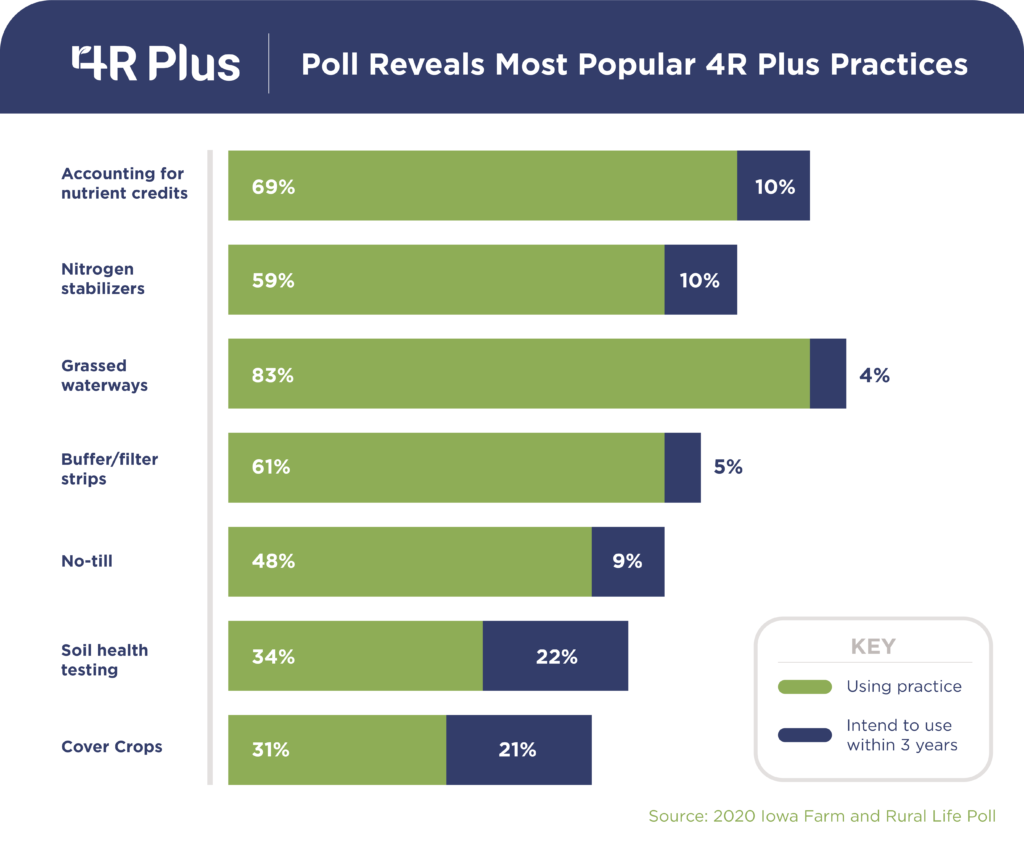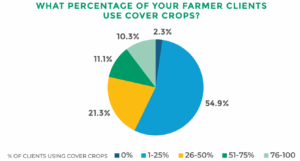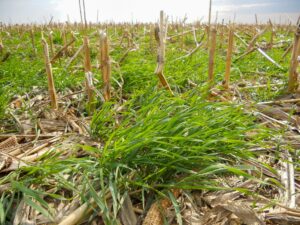By: 4R Plus
August 2022

4R Plus is having a positive impact concerning the adoption of 4R nutrient management and conservation practices, according to the recent Iowa Farm and Rural Life Poll conducted by Iowa State University. The annual survey of Iowa farmers is the longest-running survey of its kind.
The 2021 poll included questions about the 4R Plus program and generated nearly 1,100 farmer responses, with nearly two-thirds of those respondents saying they were aware of the 4R Plus program.
Farm press, Iowa State University, government agencies, ag retailers, farm/commodity groups, industry events and more have helped spread awareness of the importance of matching the fertilizer type and amount to crop needs, making nutrients available when crops need them and keeping those nutrients where crops can use them. Two-thirds of those surveyed indicated that 4R Plus information and programs had influenced their decisions to use these practices.
Also encouraging, 82% of respondents said they had noticed more discussion of soil health in the farm press the last couple of years, with 75% of those polled indicating they have paid more attention to soil health in recent years.
Openness to 4R Plus and Soil Health Practices
With awareness and understanding comes openness to implementing the 4Rs – right source, right time, right rate and right place – and the “Plus” conservation practices. “The literature on soil and water conservation practice adoption and related theory show that openness to adoption or intention to adopt are critical antecedents to adoption decisions and behaviors,” J. Arbuckle, director of the annual survey and Iowa State University Extension and Outreach sociologist, writes in the Farm Poll report.

The poll showed over half of those surveyed have used or plan to use within three years in-field nutrient management practices like accounting for nutrient credits from different sources (79%) and using nitrogen stabilizers (69%). Fifty-eight percent have or plan to grid soil sample to inform variable rate nitrogen application.
Adoption of edge-of-field and structural practices varied widely. Eighty-seven percent say they have grassed waterways or plan to add them, 66% say they have or plan to add buffer/filter strips and just 11% say they are using or plan on adding prairie strips.
The most used or planned soil health practice was no-till (57%), followed by soil health testing (56%) and cover crops (52%).
“The survey showed that while overall farmer use of 4R Plus practices is far below where we need to be to meet the state’s soil health and water quality goals, many of the farmers who aren’t using the practices now either intend to try them soon or are at least open to the idea of future use,” notes Arbuckle. He says the results signal adoption rates are headed in the right direction, but additional assistance will likely be needed to encourage or spur wider adoption.
What are the holdups to cover crop adoption?
The survey also assessed barriers to cover crop adoption. Farmers showed the most agreement on two barriers: Insufficient time between harvest and winter to justify use, and high seed costs. These categories generated 57% and 56% agreement, respectively. The next highest level of agreement regarding barriers were concerns cover crops could delay spring planting (46%) followed by lack of knowledge about cover crops (25%).
Forty-nine percent of the respondents indicated larger crop insurance discounts tied to cover crops would be an effective incentive for spurring use. And 46% indicated they would like to learn more about cover crops.
Why the focus on cover crops?
Cover crops are one of the most highly promoted conservation practices due to their ability to reduce nutrient and soil losses from fields and their positive impacts on soil quality and health.
Nearly a third of those surveyed indicated they had planted cover crops on at least some of their farmland in 2020. Seventy-six percent of them agreed cover crops had reduced erosion; 73% concurred they reduced nutrient loss; 58% agreed they increased forage for livestock; and 56% agreed they reduced weed pressure.
“These findings that show farmers are experiencing positive impacts help make the case that 4R Plus practices make sense both environmentally and economically,” says Paige Frautschy, Iowa Agriculture Program Director for The Nature Conservancy, who partnered on the survey design.
While these results are encouraging, it’s also worth noting the survey reflected a substantial amount of farmer uncertainty about benefits, particularly regarding field trafficability, weed control expenses and reduced fertilizer needs.
“This signals that while awareness of and openness to 4R Plus practices has grown, there is still work to be done to convince more growers to join the movement,” adds Frautschy. “The farmers who are planning to try practices or open to future use represent the next waves of adopters. “This information helps us understand what kind of progress we’re making, and which practices are of greatest interest to that next wave of adopters,” she adds. “Knowing that so many farmers may be ready to give 4R Plus practices a try is energizing for the many groups that are working toward the goals of the Iowa Nutrient Reduction Strategy.”



